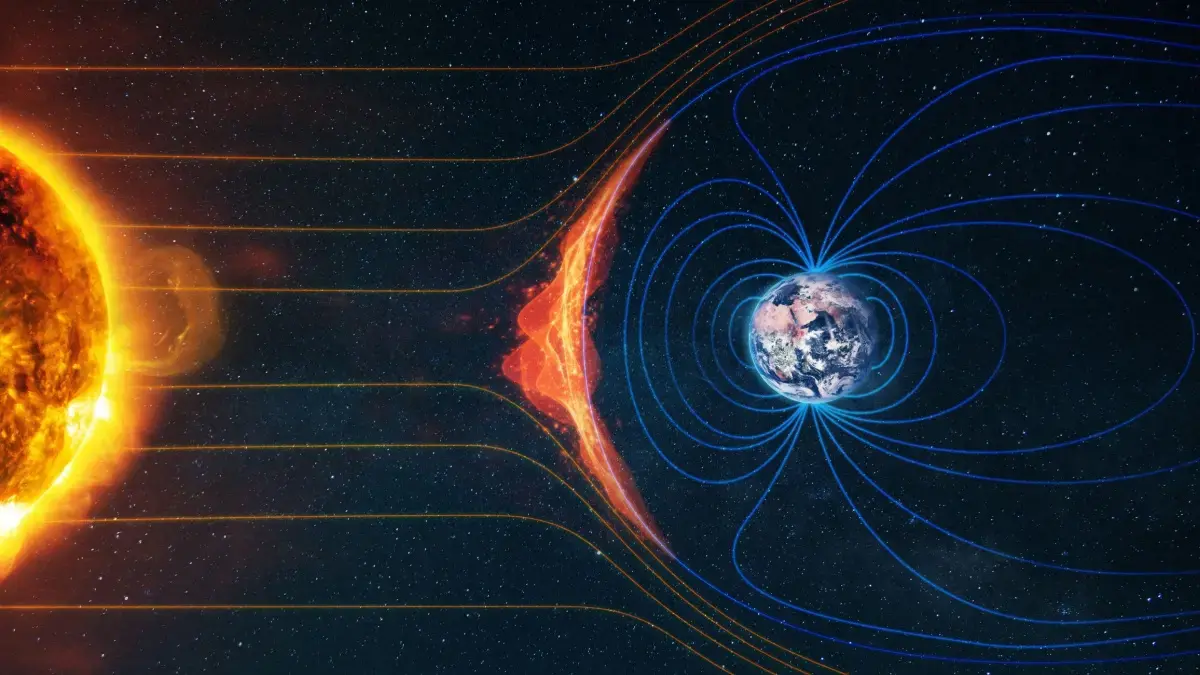The Earth’s magnetic field, an invisible yet crucial force, plays a fundamental role for both humans and animals. While humans rely on tools like compasses for their navigation, species such as birds, particularly the European robin, utilize advanced biological mechanisms to migrate with remarkable precision. This fascinating ability to detect the magnetic field raises questions about the latent perception that humans may also possess.
The core of the information
- The Earth’s magnetic field is essential for life on Earth.
- Many animals, such as the European robin, use this force to migrate.
- Crytochromes in birds’ eyes play a key role in their quantum navigation.
- Behavior in other animals also demonstrates their sensitivity to the magnetic field.
The Earth’s magnetic field and its importance
The Earth’s magnetic field is an invisible force that plays an essential role in life on Earth. It not only influences our environment but also forms a fundamental mechanism that many species, including humans, use to navigate and orient themselves. This magnetic phenomenon, although undetectable by our senses, is evidenced by various behaviors in animals, highlighting the incredible capacity of some species to harness this natural force.
Human navigation tools
To move around the world, humans have turned to tools like compasses, which use the Earth’s magnetic field to indicate north. Throughout history, these devices have proven invaluable, enabling exploration, trade, and much more. However, our reliance on these instruments should not make us forget that we share this capacity with other life forms that perceive the magnetic field in a more intuitive and natural way.
Animal perception and migration
Many animals, including some birds like the European robin, possess an innate ability to perceive the Earth’s magnetic field. This unique sense enables them to migrate over long distances with impressive precision. Birds utilize specific receptors in their eyes, known as cryptochromes, and exploit a quantum process that allows them to “see” the magnetic field, converting a wave into directional information.
Quantum processes of cryptochromes
The activation of cryptochromes by light leads to the creation of entangled electrons, a fascinating aspect of quantum physics. These electrons respond directly to the magnetic field, providing essential information to the bird’s brain. The brain interprets these responses to offer a true guideline, allowing birds to navigate remarkably during their migrations across thousands of miles.
Animal behavior regarding the magnetic field
The perception of the magnetic field is not limited to birds. Other animals, such as dogs, orient themselves north-south while defecating, indicating their sensitivity to the magnetic field. Similarly, cows, deer, and even raccoons exhibit behavior that reflects their ability to detect this force. Foxes, in turn, increase their hunting success by using the magnetic field to strategically position themselves relative to their prey.
Belgian Researchers Make an “Invaluable” Discovery That Could Lead Them to the Nobel Prize
Latency of magnetoreception in humans
Research suggests that humans may also possess a latent form of magnetoreception, indicating a potential connection to this natural force. Studies have observed changes in brain activity in humans in response to electromagnetic fields, raising questions about our own sensitivity to the magnetic field. However, there remains ongoing scientific debate about whether this represents a true capacity or merely a byreaction.

